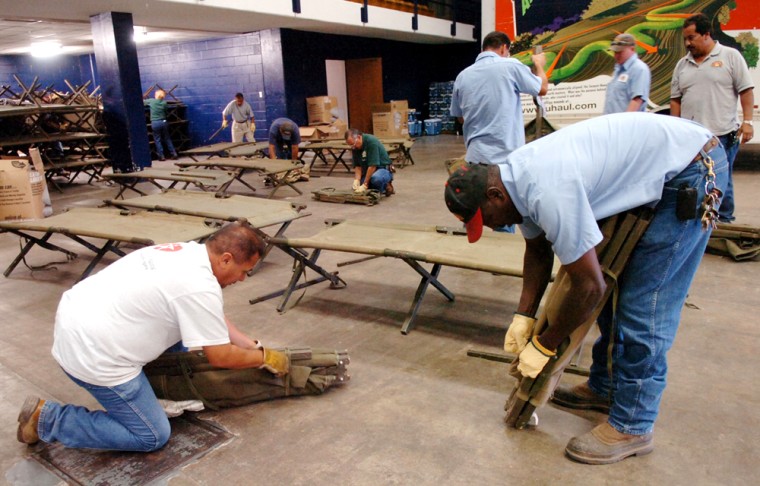Texans eased up their storm readiness Tuesday as a weakened Hurricane Dean blew westward across Mexico’s Yucatan Peninsula on a path that was expected to bring nothing more than higher surf to the state.
Gov. Rick Perry ordered the withdrawal of rescue teams, fuel tanks and other equipment that had been deployed to South Texas. A statewide shelter network of 28 communities prepared to house evacuees was ordered to stand down Tuesday morning.
Dean struck land early Tuesday just north of the Mexico-Belize border as a Category 5 hurricane with sustained wind of nearly 165 mph.
It quickly lost some of that wind speed over land, but Dean was still the third most intense hurricane to make landfall since record keeping began in the 1850s, the National Hurricane Center said Tuesday.
Dean was moving west at 20 mph, expected to cross the peninsula back into the Gulf of Mexico during the afternoon and then make a second landfall north of Veracruz, Mexico, on Wednesday.
Texas won’t even get rain from Dean’s outermost bands and there is no risk of significant flooding, said National Weather Service meteorologist Jason Straub in Brownsville.
Texas had been especially edgy about the hurricane because large parts of the state were still saturated from flooding caused by the remnants of Tropical Storm Erin. National Guard and search-and-rescue teams had been mobilized to prepare for the worst.
The state sent six C-130 aircraft to Cameron County in case any critically ill patients needed to be evacuated from hospitals, and about 3,000 buses had been on standby for possible evacuations.
